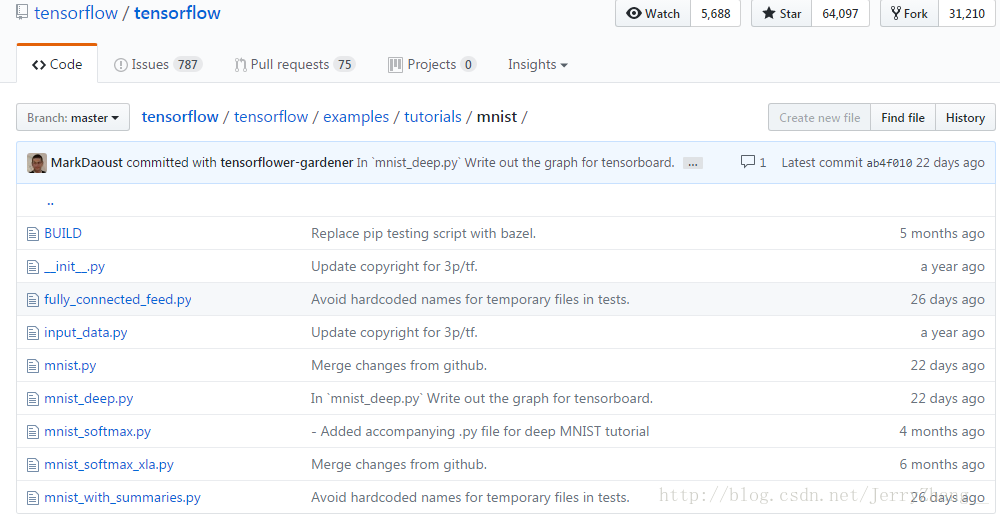内容:使用TensorFlow跑MNIST,并保存模型。之后恢复模型并进行测试
配置:win7x64/PyCharm/Python3.5/tensorflow-1.2.1/dataSet-MNIST
原程序:https://github.com/tensorflow/tensorflow/tree/master/tensorflow/examples/tutorials/mnist
1.网络定义
def deepnn(x):
"""deepnn builds the graph for a deep net for classifying digits.
Args:
x: an input tensor with the dimensions (N_examples, 784), where 784 is the
number of pixels in a standard MNIST image.
Returns:
A tuple (y, keep_prob). y is a tensor of shape (N_examples, 10), with values
equal to the logits of classifying the digit into one of 10 classes (the
digits 0-9). keep_prob is a scalar placeholder for the probability of
dropout.
"""
# Reshape to use within a convolutional neural net.
# Last dimension is for "features" - there is only one here, since images are
# grayscale -- it would be 3 for an RGB image, 4 for RGBA, etc.
with tf.name_scope('reshape'):
x_image = tf.reshape(x, [-1, 28, 28, 1]) # [batch,height,width,channels]
# First convolutional layer - maps one grayscale image to 32 feature maps.
with tf.name_scope('conv1'):
W_conv1 = weight_variable([5, 5, 1, 32]) # shape of weight [conv_W,conv_H,channal_before_conv,channal_after_conv]
b_conv1 = bias_variable([32])
h_conv1 = tf.nn.relu(conv2d(x_image, W_conv1) + b_conv1)
# Pooling layer - downsamples by 2X.
with tf.name_scope('pool1'):
h_pool1 = max_pool_2x2(h_conv1)
# Second convolutional layer -- maps 32 feature maps to 64.
with t







 本文档展示了如何使用TensorFlow训练MNIST数据集,并详细说明了模型及其参数的保存和恢复过程。在Windows环境下,通过Python3.5和TensorFlow 1.2.1实现网络定义,训练后保存模型文件。恢复模型后进行测试,由于训练迭代次数有限,测试准确率较低。
本文档展示了如何使用TensorFlow训练MNIST数据集,并详细说明了模型及其参数的保存和恢复过程。在Windows环境下,通过Python3.5和TensorFlow 1.2.1实现网络定义,训练后保存模型文件。恢复模型后进行测试,由于训练迭代次数有限,测试准确率较低。

 最低0.47元/天 解锁文章
最低0.47元/天 解锁文章
















 2011
2011

 被折叠的 条评论
为什么被折叠?
被折叠的 条评论
为什么被折叠?








